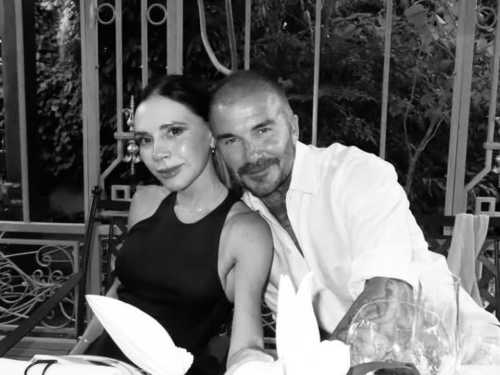
There’s a Francophile aspect to the films of the South Korean director
Hong Sang-soo that’s reflected in his occasional decision to film in
France and with French actors—as in his new film, “Claire’s Camera,”
which was shot in Cannes and stars Isabelle Huppert. (It is the second
film she’s made with him; the first, “In Another
Country,”
was released in 2012.) The intimate conflicts that Hong dramatizes,
often refracting situations and experiences similar to his own, have
earned his films comparisons to those of Jean Eustache, and Hong’s
emphasis on long scenes of deftly jousting dialogue has brought
comparisons to the work of Éric Rohmer. But the French director whose
films Hong’s most resemble, in their cinematic architecture, is Alain
Resnais. Like Resnais’s movies, most of Hong’s films offer intriguingly
intricate narrative structures that bend and twist and fragment his
stories’ timelines. Unlike Resnais, however, Hong realizes these
elaborate and complex stories with a cinematic simplicity that may seem
casual, even tossed-off.
What’s amazing about Hong’s films is that, where Resnais developed his
elaborate frameworks on the basis of an extensive screenwriting process,
Hong’s process is one of impulse and spontaneity. “Claire’s Camera”
opens in both the U.S. and France this week, and, in a new interview in Le Monde, its star, Kim Min-hee, says that Hong “writes his screenplays the morning of the shoot.” She adds, “When the screenplay arrives, there’s an incredible rush. The actors
have to learn everything by heart. The crew scrambles to get locations.”
Hong’s sense of form is powerfully immediate; he shapes story lines with
a vision of lyrical structure akin to the way that classical composers
working at top speed have created a sonata or a symphony, of vast span
and import, in a few weeks.
The high-wire virtuosity of this method reaches a new level of daring in
“Claire’s Camera”: Hong filmed it at the 2016 Cannes Film Festival,
where Huppert was taking part in the première of Paul Verhoeven’s
“Elle.” The story of “Claire’s Camera” is simple, told mainly in
flashback: Kim plays Manhee, a young Korean woman who meets a friend and
former co-worker at a Cannes café. Manhee came to the festival for her
job as an associate to a Korean film-sales agent, but, in the course of
the event, she was suddenly fired from her job; Manhee begins to tell
the story, and then it’s shown in a series of flashbacks—filmed on the
town’s streets and beaches and in restaurants and apartments—which fill
most of the film’s sixty-nine minutes.
But, all the more astoundingly, those flashbacks are themselves built
around a series of virtual flashbacks that are launched by the crucial
scene in which Manhee is fired. Her boss, Yanghye (Chang Mi-hee), a
middle-aged woman, reproaches Manhee for dishonesty and fires her on the
spot—an occasion that the bewildered Manhee commemorates with a
two-person selfie, to which Yanghye uneasily submits. Manhee is unaware
of what she’s done wrong and doesn’t consider herself dishonest at all,
so her story instantly becomes a sort of inward-looking detective story,
an investigation to determine what she may have done to stoke Yanghye’s
firm distrust. Hong quickly adds an element of suspense: he introduces
the character of So Wansoo (Jung Jin-young), a fifty-year-old Korean
director who’s at Cannes to present his new film, and who is in both a
professional and a personal relationship with Yanghye, who rebukes him
for his one-night stand with a young woman who worked for her.
That woman, of course, turns out to be Manhee, who had no idea that the
director was her boss’s boyfriend. That’s where Huppert comes in. She
plays the comedic role of Claire, a Parisian music teacher who came to
the festival with a friend whose film is playing there. Perpetually in her
hat and coat, with an awkwardly oblivious forthrightness, Huppert plays
a variation on her performances and characterizations in Serge Bozon’s
2013 film, “Tip Top” (and, again, in his 2017 film, “Madame Hyde”).
Her impulsive habit is photography; her Polaroid camera is her constant
companion, and she takes photos of everyone she meets. As it happens, in
the course of her Cannes wanderings, she meets Manhee, Wansoo, and
Yanghye; she becomes fast friends with Manhee, and the intricate round
of coincidences and ironies is amplified by the central role that
Claire’s small photographs play, like amplifiers and accelerants, in the
droll dramatic action.
Indeed, the very subject of the film is images, and Hong writes a
philosophy of image-making into the text of the film. Its culminating
insight is delivered by Claire, who tells Manhee why she takes pictures:
“Because the only way to change things is to look at everything again
very slowly.” Hong may write his scripts on the spur of the moment, but
his screenplay craft is nonetheless jewel-like, glittering with his
characters’ aphoristic observations, which bounce off one another like
dialectical billiard balls and spark a sense of visual action. At a
well-lubricated lunch with Wansoo and Yanghye, Claire takes their
pictures and delivers similar remarks, about the transformative power of
images, and that leads to a curious table game among them, one that
seems casual and frivolous but that proves to have a long dramatic
reach.
That scene, like most in the movie, is done in a single, long take,
punctuated rhetorically, and shaped dramatically, by zooms in and out
and precise panning. They’re marked by a blend of poise and
improvisation, a hard-won simplicity that fuses exquisite taste and
intricate form. Some of the movie’s pointed observations involve the
very status of art, the point at which the relentless creations of an
untrained amateur attain an expressive power. The spare immediacy of
Hong’s style reverses this trajectory: it approaches, in its plainness,
an amateur’s inspirations.
Yet for all the luminous restraint of his images and his action, Hong
depicts pain-streaked and conflict-strained relationships of a rare and
resonant intensity, complete with a slyly sordid look at the stresses,
deceptions, and delusions of the film milieu, which he caps off with a
line that Manhee tosses at a young filmmaker: “Maturity has nothing to
do with making films.” The film’s scathing and ravaging passions emerge
all the more strongly for the odd, sidelong, nearly surreptitious
ricochets that coax them out from beneath placid surfaces. There’s a
sublimely ironic force of echoing coincidences throughout “Claire’s
Camera” that suggests a supervening power, a secular metaphysics of
connections—a sort of plasma of emotional energy that flows through
Hong’s frames and gets revealed when filmed at just the right angles.
There are peculiar locations that return with a shuddering power, and
strange presences, such as a huge gray dog, whose seemingly trivial
recurrence sparks a grand moment of dramatic power and psychological
propulsion. The backward motion of searching reminiscence, along with
the forward movement of new relationships and new chances, emerges from
the intricate yet breezy construction of his scenes. In this regard, as
in the subtly supernatural air of his turbulent vision, his clear,
modernistic, comedic melodrama resembles, above all, the work of the
classic Hollywood filmmaker Joseph Mankiewicz.
Because of his swift methods, Hong is an extraordinarily prolific
filmmaker. Often working with the same actors (especially Kim, who is
also his partner, and who is one of the most calmly ferocious and
lucidly expressive actors working now), he creates films that are part
of his own cinematic universe. He has made thirteen features since 2010;
his latest, “Grass,” also starring Kim, premièred at the Berlin Film
Festival last month. Like the best artists in any field, Hong, who’s
fifty-seven, keeps getting better.
Sourse: newyorker.com






